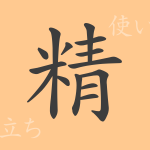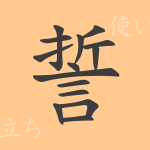The power of a single kanji character transcends its shape and phonetics, embedding itself deeply into our everyday lives. ‘製’ (セイ) is one of the essential kanji used in various contexts, from products to production processes in Japan. This article explores the depths of ‘製’, from its etymology to its meaning, usage, and its presence in idioms and proverbs.
Origins of 製
The kanji ‘製’ originates from ancient China, combining the radical for ‘糸’ (thread) with ‘制’, which originally meant ‘to arrange’ or ‘to make’. This combination illustrated the process of making things with thread. Over time, ‘製’ evolved from ‘制’ to encompass meanings related to manufacturing and processing.
Meaning and Usage of 製
‘製’ conveys the action of ‘making’ or ‘producing’, referring to the act of processing or manufacturing something and the products resulting from this process. It is used in product names to denote origin or method of production, such as ‘日本(にほん)製’ for products made in Japan, or ‘手(て)作(づく)り製’ for handcrafted items.
Readings, Stroke Count, and Radical of 製
The kanji ‘製’ has specific features in terms of its readings and structure that are worth noting.
- Readings: The on’yomi (Sino-Japanese reading) is ‘セイ’, with no common kun’yomi (native Japanese readings).
- Stroke Count: ‘製’ consists of 14 strokes.
- Radical: The radical is ‘衣’ (ころもへん) which relates to clothing.
Idioms and Phrases Using 製
Idioms and phrases including ‘製’ span a wide range and carry distinct meanings.
- ‘製鉄’ (せいてつ): The production of iron.
- ‘製糸’ (せいし): The making of silk threads.
- ‘製紙’ (せいし): The process or industry of paper making.
- ‘製造業’ (せいぞうぎょう): The manufacturing industry as a whole.
- ‘製品’ (せいひん): Manufactured goods or finished products.
Each of these terms specifically relates to the manufacturing or production in their respective fields.
Conclusion on 製
The kanji ‘製’ is crucial in connecting us to the manufacturing sector and products essential in our lives. From its origins to its current applications, ‘製’ deeply engages with Japanese industry and culture. As we continue to rely on ‘製’, it remains a key element in shaping our lifestyle and cultural identity.

























